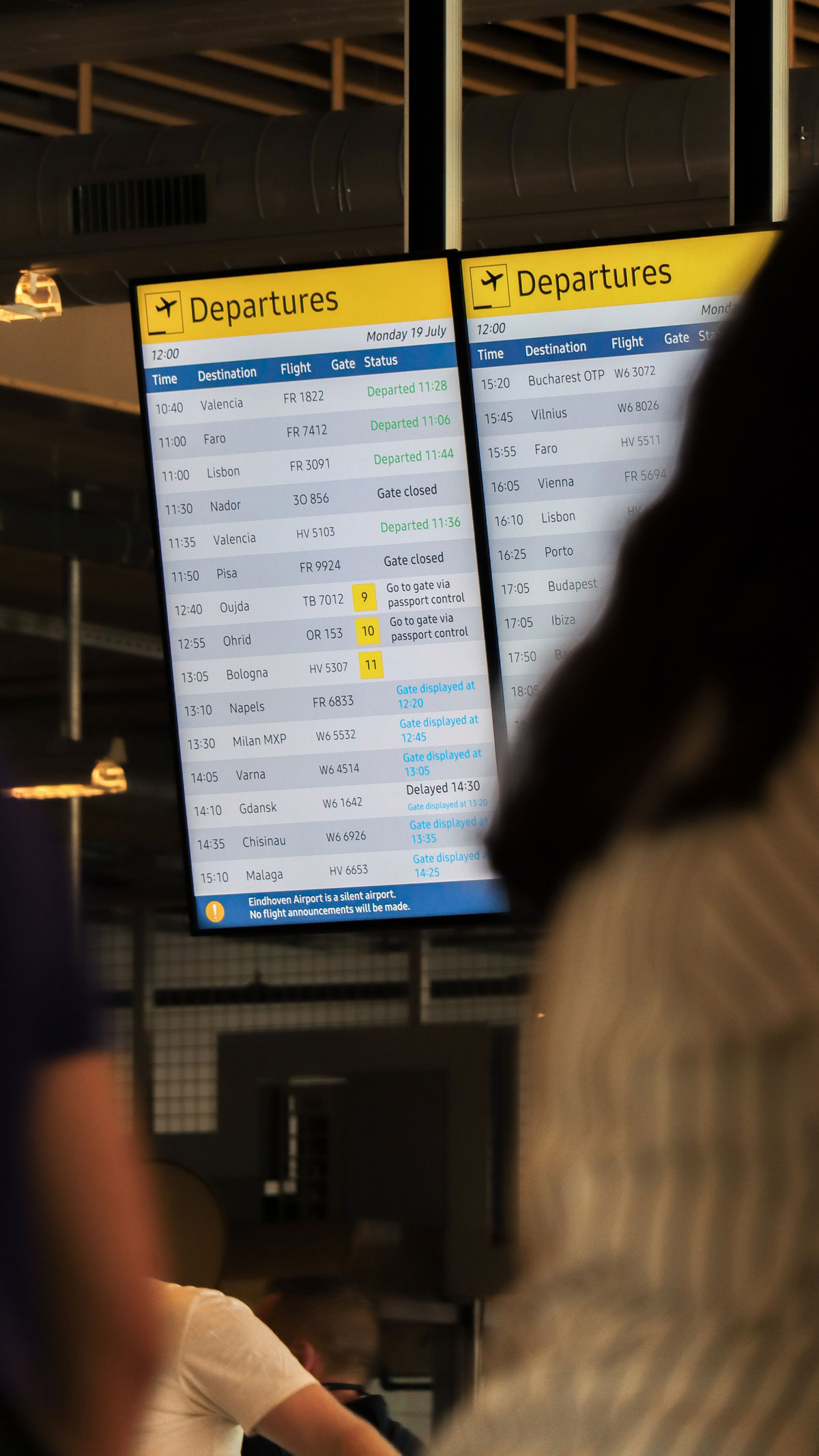Allinq keeps passive infrastructure at Schiphol healthy
Schiphol Airport is already quite automated and that will only become more in the future. But the airport can only function if the network, connections and energy supply work properly and if the cabling and data are correct. Since 2020, Allinq has been working hard to organize the data generated at the airport and to provide insight into whether the technical installations and infrastructure are working properly. Because only then insight-based proactive adjustments can be made.
Lifecycle management (LCM) is really nothing more than making sure the passive network is up-to-date, explains Jaco Mazier, lifecycle management consultant at Allinq. “At Schiphol you have to think of the technical installations and infrastructure. They must work properly, be serviced on time and be replaced in whole or in part where necessary. We pay attention to all these things at LCM and, if desired, we can provide advice to Schiphol.”
That this is very important can be illustrated by Jaco with an example.“Imagine that the power goes out. Then a UPS, an Uninterruptible Power Supply, takes over the power supply until the emergency power supply works. Such a UPS system runs on batteries. If these no longer work sufficiently, connectivity for part of the network is no longer guaranteed. The impact of that can be enormous. Through good lifecycle management, we know in well ahead in time that the UPSs are no longer working properly and we can replace them with new ones. This is how we avoid problems.”
Ready for the future
Allinq also helps the airport to replace or remove old cabling. “Not only is copper being replaced by fibre, more and more data has to be passed through the existing cables. Where possible, we remove the copper and upgrade copper that must remain in service where necessary. The cupboard space that has been created means that there is room for further expansion in the future,” explains Jaco. Because maintaining the passive infrastructure capacity is also a responsibility of Allinq. If the client asks for a service, there must be room in cabling and cabinets to meet that demand.” All with the aim of being able to deliver connectivity everywhere. “We also look at where we can prevent possible malfunctions. For example, think of a switch in a cabinet that gets too hot and breaks as a result. We place sensors in the cabinet to measure the temperature. Then we provide insight into this data in a dashboard we built.”
Correct data in the system
Such data, from temperature sensors, but also where which cables run, what goes through them, which systems run on them, which store at Schiphol is connected to which cabinet, etc., is essential for good lifecycle management. Sander Wolschrijn, project leader at Allinq Advanced Solutions, started working with the data at Schiphol, because there was still room for improvement. “Firstly, we wanted to make sure that the situation as it actually is, is also correct stated in the system. Think of a cabinet with cables and connections: are they the same as in the system, does the customer mentioned really purchase services from that cabinet, or is he connected to a different connection? You have to know whether this is correct, otherwise you will not have correct data to work with.” Field engineers are sent out for this task, who check the cabinets, register errors and correct them in the system. “We are achieving good results with that.”

In this way we help to prepare Schiphol for the future"
Sander Wolschrijn
Connecting systems
All that data ends up in different management systems.”We bring all the data from those three systems together in one system. We are looking for a key to connect all systems together, so that you can read out the desired data at the touch of a button. We are already reaping the benefits of that. For example, certain information arrives within five minutes, whereas it used to take a week,” Sander explains enthusiastically. However, new questions also arise. “Why is certain data in one system and not in another? Many systems at Schiphol have been renewed over the years, which has caused quite a bit of noise. This ensures that, if there is a malfunction, you do not quickly have the correct information.” It can also cause other problems. For example, if the system states that a cable is free, but it is actually used anyway. “If another service is then set up, the first user will no longer be connected.”
Self-managing
According to Sander, there are over 2,000 cabinets at Schiphol. If a field engineer spends an average of three hours per cabinet, it would take you more than ten years to check all connections. Allinq has come up with a solution for that. “Thanks to our project, we can see which areas are suspicious, meaning that there is a greater chance that something is not working correctly there. So that’s where we start checking.” Every room, cabinet or domain that has been checked is delivered clean. “We say that ‘the roof being closed’. The data is correct and the system is in order. We also ensure that no new pollution enters the system.” The client, in this case Schiphol, can do the management itself via a dashboard that indicates exactly when and where certain actions must be taken. “In short, we bring reality into line with the systems and we coordinate the systems well with each other. This allows us to achieve very good results for the client. Accordingly, the client is very satisfied with the results. In this way we help to prepare Schiphol for the future”, concludes Sander Wolschrijn.
